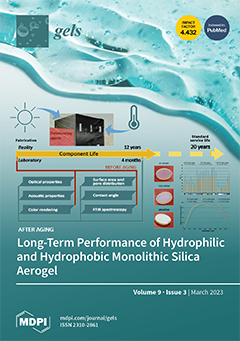Puerarin has been reported to have anti-inflammatory, antioxidant, immunity enhancement, neuroprotective, cardioprotective, antitumor, and antimicrobial effects. However, due to its poor pharmacokinetic profile (low oral bioavailability, rapid systemic clearance, and short half-life) and physicochemical properties (e.g., low aqueous solubility and poor stability) its
[...] Read more.
Puerarin has been reported to have anti-inflammatory, antioxidant, immunity enhancement, neuroprotective, cardioprotective, antitumor, and antimicrobial effects. However, due to its poor pharmacokinetic profile (low oral bioavailability, rapid systemic clearance, and short half-life) and physicochemical properties (e.g., low aqueous solubility and poor stability) its therapeutic efficacy is limited. The hydrophobic nature of puerarin makes it difficult to load into hydrogels. Hence, hydroxypropyl-β-cyclodextrin (HP-βCD)-puerarin inclusion complexes (
PIC) were first prepared to enhance solubility and stability; then, they were incorporated into sodium alginate-grafted 2-acrylamido-2-methyl-1-propane sulfonic acid (SA-
g-AMPS) hydrogels for controlled drug release in order to increase bioavailability. The puerarin inclusion complexes and hydrogels were evaluated via FTIR, TGA, SEM, XRD, and DSC. Swelling ratio and drug release were both highest at pH 1.2 (36.38% swelling ratio and 86.17% drug release) versus pH 7.4 (27.50% swelling ratio and 73.25% drug release) after 48 h. The hydrogels exhibited high porosity (85%) and biodegradability (10% in 1 week in phosphate buffer saline). In addition, the in vitro antioxidative activity (DPPH (71%), ABTS (75%), and antibacterial activity (
Staphylococcus aureus,
Escherichia coli, and Pseudomonas aeruginosa) indicated the puerarin inclusion complex-loaded hydrogels had antioxidative and antibacterial capabilities. This study provides a basis for the successful encapsulation of hydrophobic drugs inside hydrogels for controlled drug release and other purposes.
Full article


